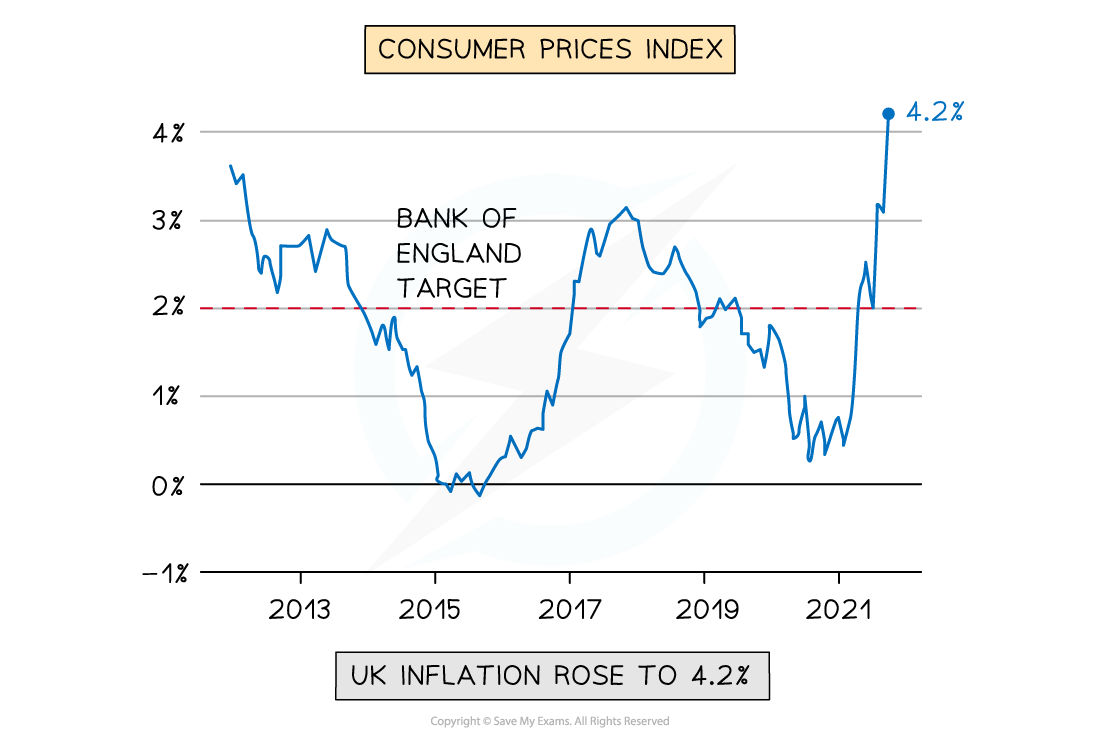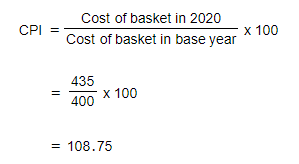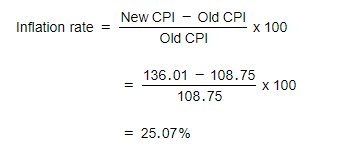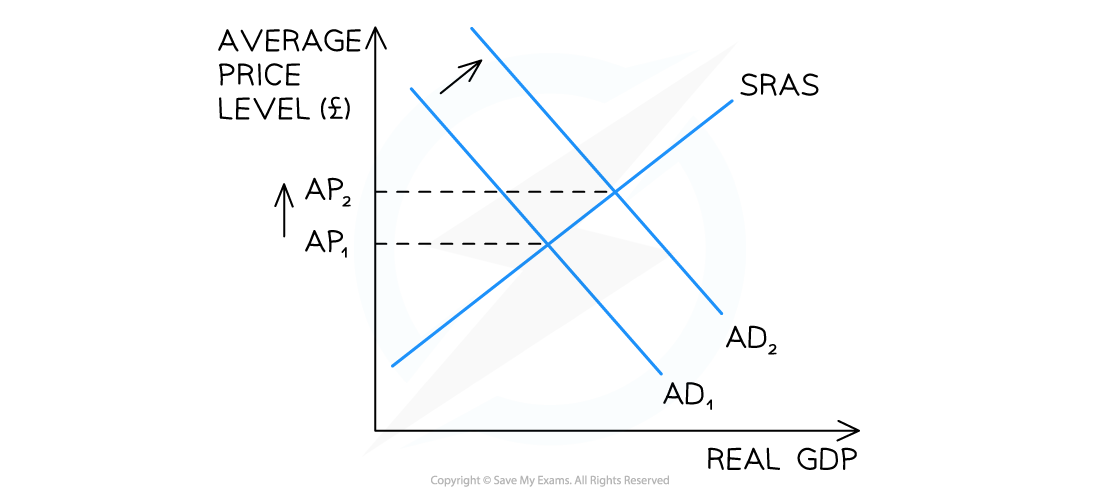- 翰林提供学术活动、国际课程、科研项目一站式留学背景提升服务!
- 400 888 0080
Edexcel A Level Economics A:复习笔记2.1.2 Inflation
Inflation, Deflation & Disinflation
- Inflation is the sustained increase in the average price level of goods/services in an economy
- The average price level is measured by checking the prices of a 'basket' of goods/services that an average household will purchase each month
- This basket of goods is turned into an index and it is called the consumer price index (CPI)
- The UK has an inflation target of 2% per annum
- Low inflation is better than no inflation as it is a sign of economic growth
- Deflation occurs when there is a fall in the average price level of goods/services in an economy
- Deflation only occurs when the percentage change in prices falls below zero %
- Disinflation occurs when the average price level is still rising, but at a lower rate than before
- These figures demonstrate disinflation: Y1 = 5% Y2 = 4% Y3 = 2%
- Inflation is increasing but at a decreasing rate
- These figures demonstrate disinflation: Y1 = 5% Y2 = 4% Y3 = 2%
Worked Example
How would you characterise the fall in the CPI from 2018 to 2021? Explain your answer

Step 1: Study the time period and decide if you are witnessing inflation, disinflation or deflation
Disinflation
Step 2: Explain your answer
According to the CPI data, prices are still rising but at a decreasing rate. For example, in 2018 prices were rising at around 3%. In 2019 this increase fell to roughly 1.8%. In 2021, they were still rising but by a much lower 0.5%
Calculating Inflation Using the Consumer Price Index (CPI)
- Inflation is the sustained increase in the average price level of goods/services in an economy
- The inflation rate is the change in average price levels in a given time period
- The inflation rate is calculated using an index with 100 as the base year
- If the index is 100 in year 1 and 107 in year 2 then the inflation rate is 7%
- The UK uses two inflation indices - the consumer price index (CPI) and the retail price index (RPI)
- Each is calculated slightly differently
The Consumer Price Index (CPI)
- A 'household basket' of 700 goods/services that an average family would purchase is compiled on an annual basis
- A household expenditure survey is conducted to determine what goes into the basket
- Each year, some goods/services exit the basket and new ones are added
- Goods/services in the basket are weighted based on the proportion of household spending
- E.g. More money is spent on food than shoes, so shoes have a lower weight in the basket
- Each month, prices for these goods/services are gathered from 150 locations across the UK
- These prices are averaged out
- The price x the weighting determines the final value of the good/service in the basket
- These final values are added together to determine the price of the 'basket'

- The percentage difference in CPI between the two years is the inflation rate for the period
Worked Example
Using the information in the table, calculate the inflation rate for 2021 if the price of the basket in the base year (2019) was $400
| Good | Price 2020 | Price 2021 | Weight | Basket 2020
(Price x weight) |
Basket 2021
(Price x weight) |
| Housing, water, electricity, gas | 950 | 1200 | 34% | 323.00 | 408.00 |
| Transport | 250 | 325 | 11% | 27.50 | 35.75 |
| Food | 500 | 620 | 9% | 45.00 | 55.80 |
| Recreation & culture | 300 | 340 | 10% | 30.00 | 34.00 |
| Clothing & footwear | 190 | 210 | 5% | 9.50 | 10.50 |
| $435.00 | $544.05 |
Step 1: Calculate the CPI for 2020

Step 2: Calculate the CPI for 2021

Step 3: Calculate the percentage difference between the CPI for 2021 and 2020

The Limitations of Using the CPI
- The CPI provides a level of inflation for the average basket and the basket of many households is not the average basket
- Depending on what households buy the level of inflation for each one can vary significantly
- As an average, it also ignores regional differences in inflation e.g. London inflation may be much higher than Harrogate inflation
- The CPI is one of several methods used by countries in determining inflation - another is the retail price index (RPI)
- This can make comparisons between countries less meaningful as one may use the RPI & another the CPI
- The CPI does not capture the quality of the products in the basket
- Product quality changes over time and so the comparison with different time periods is less useful
- The CPI only measures changes in consumption on an annual basis
- Changes in consumption can occur more frequently and the index is always behind these changes
- The CPI is prone to errors in data collection
- It is based on a survey that goes to thousands of households each year, yet it is still a small sample
- The respondents have no incentive to fill in the survey carefully and accurately
The Retail Prices Index (RPI)
- The retail price index (RPI) is calculated in exactly the same way as the CPI
- Certain goods/services that are excluded from the CPI are included with the RPI
- These include council tax, mortgage interest payments, house depreciation, and other house purchasing costs such as estate agents fees
- Certain goods/services that are excluded from the CPI are included with the RPI
- Due to the extra inclusions, inflation measured using the RPI is usually higher than the CPI
- This is mainly due to its sensitivity to interest rate changes which affect mortgage interest
- It's argued that the RPI is a more accurate indication of a households inflation
The Causes of Inflation
- An increase in the average prices in an economy can be caused by demand pull inflation, cost push inflation, an increase in the money supply, & an increase in wages
Demand Pull Inflation
- Demand pull inflation is caused by excess demand in the economy
- Aggregate demand (AD) is the sum of all expenditure in the economy
- AD = Consumption (C) + Investment (I) + Government spending (G) + Net Exports (X-M)
- Short run aggregate supply (SRAS) is the total supply provided in the economy at a given average price level

A diagram that shows how an increase in aggregate demand raises the average price level in an economy
Diagram Analysis
- If any of the four components of AD increase, there will be a shift to the right of the AD curve from AD1 → AD2
- At the original price (AP1), there is now a condition of excess demand in the economy
- As prices rise, there is a contraction of AD and an extension of SRAS
- Prices for goods/services are bid up from AP1 → AP2
- Demand pull inflation has occurred
Cost Push Inflation
- Cost push inflation is caused by increases in the costs of production in an economy

A diagram that shows how an increase in the costs of production raises the average price level in an economy
Diagram Analysis
- If any of the costs of production increase (labour, raw materials etc.), or if there is a fall in productivity, there will be a shift to the left of the SRAS curve from SRAS1→SRAS2
- At the original price (AP1), there is now a condition of excess demand in the economy
- As prices rise, there is a contraction of AD and an extension of SRAS
- Prices for goods/services are bid up from AP1→AP2
- Cost push inflation has occurred
Changes to the Money Supply
- If the Central Bank lowers the base rate, there is likely to be increased borrowing by firms and consumers
- This will result in an increase in consumption and investment
- It is likely to lead to a form of demand-pull inflation
- The Central Bank can also increase the money supply through quantitative easing
- This will result in increased liquidity and lower interest rates
- It is likely to lead to a form of demand-pull inflation
Changes to Wages
- Increased aggregate demand in an economy causes demand-pull inflation
- Workers now feel less well off as their wages no longer have the same purchasing power
- Workers may demand wage increases to compensate for the higher prices
- Those wage increases are now a form of cost push inflation (increased costs of production) and drive prices even higher
- This economic phenomenon is called a wage-price spiral
The Effects of Inflation
The Impact Of Inflation On Different Stakeholders
| Firms | Consumers | Government | Workers |
|
|
|
|
转载自savemyexams

最新发布
© 2025. All Rights Reserved. 沪ICP备2023009024号-1









